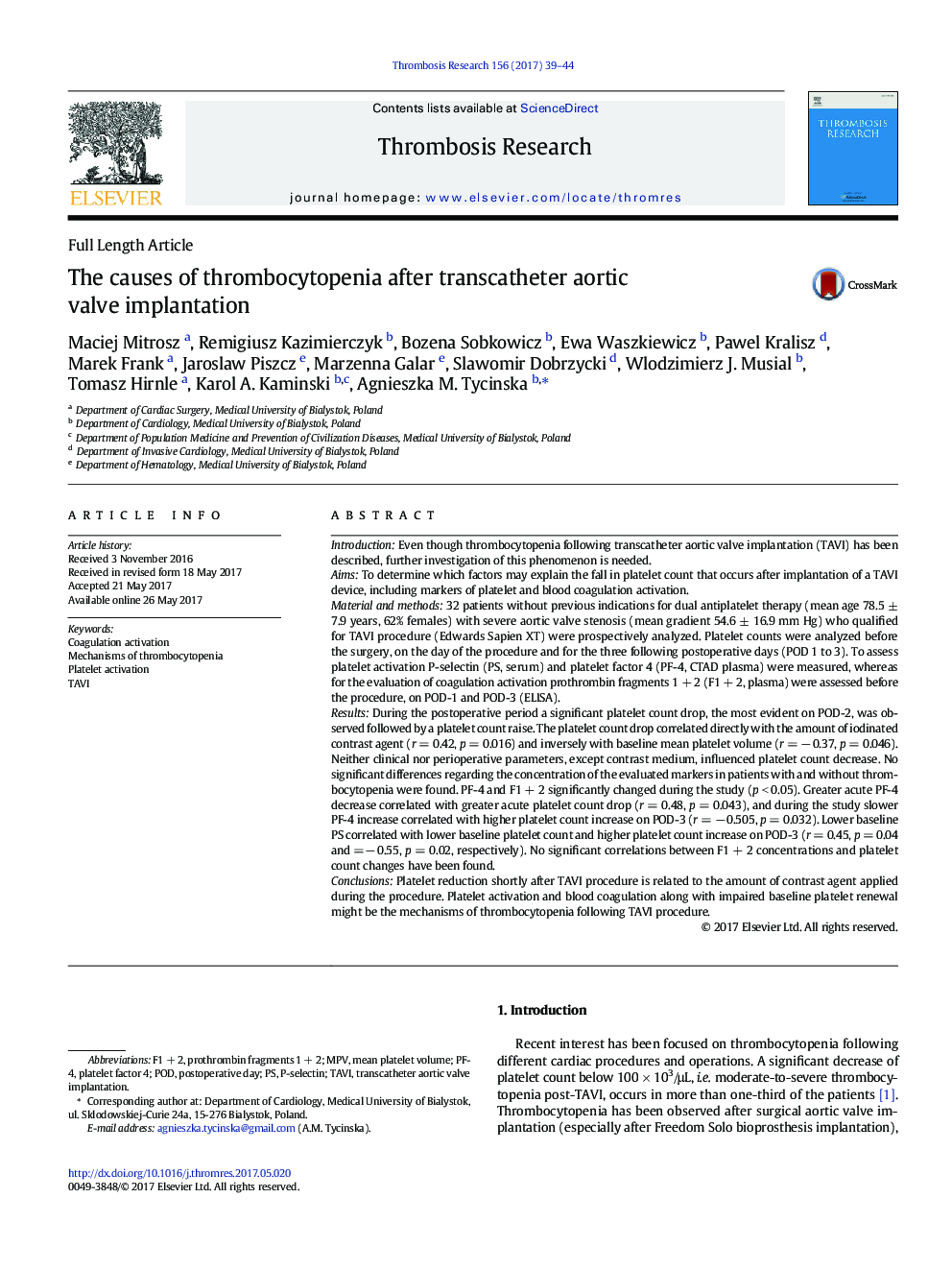| Article ID | Journal | Published Year | Pages | File Type |
|---|---|---|---|---|
| 5621855 | Thrombosis Research | 2017 | 6 Pages |
â¢The mechanism of TP following TAVI is complex and mediated by some platelet as well as blood coagulation activation factors.â¢Platelet reduction shortly after TAVI procedure might be related to the amount of contrast.â¢Enhanced platelet activation following TAVI might justify the use of the second antiplatelet agent after the procedure.
IntroductionEven though thrombocytopenia following transcatheter aortic valve implantation (TAVI) has been described, further investigation of this phenomenon is needed.AimsTo determine which factors may explain the fall in platelet count that occurs after implantation of a TAVI device, including markers of platelet and blood coagulation activation.Material and methods32 patients without previous indications for dual antiplatelet therapy (mean age 78.5 ± 7.9 years, 62% females) with severe aortic valve stenosis (mean gradient 54.6 ± 16.9 mm Hg) who qualified for TAVI procedure (Edwards Sapien XT) were prospectively analyzed. Platelet counts were analyzed before the surgery, on the day of the procedure and for the three following postoperative days (POD 1 to 3). To assess platelet activation P-selectin (PS, serum) and platelet factor 4 (PF-4, CTAD plasma) were measured, whereas for the evaluation of coagulation activation prothrombin fragments 1 + 2 (F1 + 2, plasma) were assessed before the procedure, on POD-1 and POD-3 (ELISA).ResultsDuring the postoperative period a significant platelet count drop, the most evident on POD-2, was observed followed by a platelet count raise. The platelet count drop correlated directly with the amount of iodinated contrast agent (r = 0.42, p = 0.016) and inversely with baseline mean platelet volume (r = â 0.37, p = 0.046). Neither clinical nor perioperative parameters, except contrast medium, influenced platelet count decrease. No significant differences regarding the concentration of the evaluated markers in patients with and without thrombocytopenia were found. PF-4 and F1 + 2 significantly changed during the study (p < 0.05). Greater acute PF-4 decrease correlated with greater acute platelet count drop (r = 0.48, p = 0.043), and during the study slower PF-4 increase correlated with higher platelet count increase on POD-3 (r = â 0.505, p = 0.032). Lower baseline PS correlated with lower baseline platelet count and higher platelet count increase on POD-3 (r = 0.45, p = 0.04 and =â 0.55, p = 0.02, respectively). No significant correlations between F1 + 2 concentrations and platelet count changes have been found.ConclusionsPlatelet reduction shortly after TAVI procedure is related to the amount of contrast agent applied during the procedure. Platelet activation and blood coagulation along with impaired baseline platelet renewal might be the mechanisms of thrombocytopenia following TAVI procedure.
